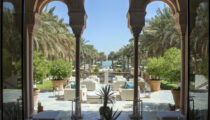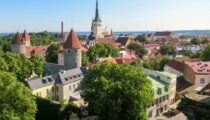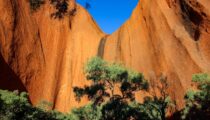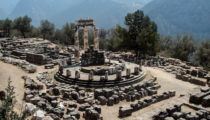October 9, 2009
An interview with one of our Sicily insiders
Sicily has become a favorite destination for many of our clients who have already traveled extensively in Italy and for those interested in tracing their family heritage. Sicily is also great for first-time visitors to Italy who are attracted to the fascinating Mediterranean island for its complex history, abundant culture and delicious food. We recently chatted with one of our travel experts based in Agrigento, Sicily.
Q: What do travelers find most interesting about Sicily?
A: Sicily is the preeminent island in the Mediterranean, and it has long been at the crossroads of trade. Waves of successive conquerors have left their mark in superb architecture and inventive cuisine. Like many islands, Sicily is a melting pot of cultures, each wave of invaders adding to the culinary and architectural mix. The Greeks brought wine and superb temples; the Romans, pasta and amphitheaters; Normans, castle and church architecture; the Spanish, chocolate and the Baroque. But the Arabs had the greatest influence, introducing spices such as cinnamon and sesame, sweet-and-sour combinations of raisins and vinegar, fruit such as pomegranates, and couscous and other Eastern dishes. And their architectural influence is felt throughout the island.
Q: What do you consider the “must-visit” places in Sicily?
A: Sicily is home to the some of the best classical ruins anywhere, most of which are dramatically sited overlooking the Mediterranean Sea. I always suggest visiting the fifth-century B.C. Temple of Segesta, one of the world’s most perfectly preserved monuments from antiquity; the Greek acropolis and ruined temples in Selinunte; the stunning Valley of the Temples in Agrigento; the grand Villa Romana del Casale, which is carpeted with the most magnificent mosaics in western Europe; the Temple of Apollo on Ortygia Island in Syracuse; and the great Greek theaters in Syracuse and Taormina.
I love cities such as Ragusa, Modica and Noto for their Baroque style. I love Palermo for its people; its monuments such as the Teatro Massimo, the Quattro Canti and the Cathedral; and its historic food markets—Il Capo, La Vucciria and Ballar. I also love the medieval hilltop town of Erice, the wonderful landscape of the Salt Pans of Marsala, and finally Mount Etna for its special wines!
Q: What are your favorite Sicilian culinary specialties?
A: Caponata made with eggplant and vegetables, and cavatelli, a typical pasta.
Q: What do you think makes the Artisans of Leisure private tours in Sicily so special?
A: Travelers on Artisans of Leisure tours love the opportunity to visit Sicily’s little towns, the countryside, and traditional producers of Sicilian specialties. They also like meeting the local people during activities such as private Sicilian cooking classes. The fact that the tours include the best hotels in Sicily, and can be taken anytime (including during festive times in Sicily like during Easter week) is another quality that travelers appreciate.
Q: What do you like to do in your free time?
A: I have a house in the country, so when I’m free, I relax in my garden. During the summer, I love to travel.
Q: Where do you like to travel in Sicily?
A: When I have some days free, I love to go to Mount Etna and walk. I live by the sea, so during the summer I love going to the beach!
Q: Where do you like to travel?
A: I visit Europe often, but I would love travel to India and New Zealand.
Q: What would you recommend for travelers interested in purchasing unique, authentically Sicilian items that they cannot find elsewhere?
A: Ceramics, a good bottle of extra virgin olive oil, and almond sweets.
Q: What are you reading these days?
A: The Empire of Chindia, a book by Federico Rampini about the economy and the new generations in India and China.
Q: Do you collect anything?
A: Ceramic tiles. My tiles are very old and are all from Sicily or Naples. They come from Burgio, Santo Stefano di Camastra, Palermo, Caltagirone, Sciacca and Panarea (one of the Aeolian Islands). I have some that can be dated from around 1200 or 1300 to 1800 and 1920.

 MENU
MENU



